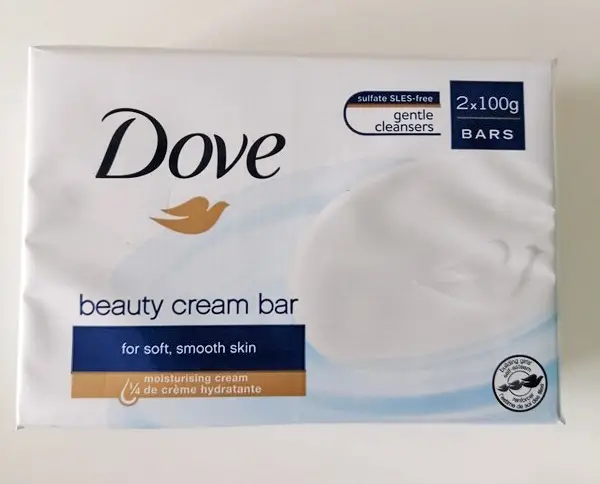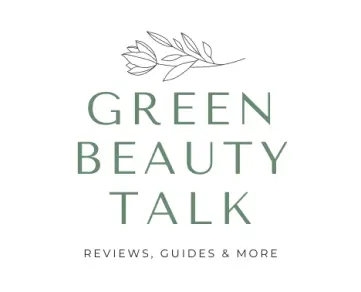The Dove Beauty Cream Bar has been a beloved product for over 60 years, praised for its cleansing, nourishing, and hydrating properties due to its ¼ moisturizing cream formula. But is it truly the miracle beauty bar it’s claimed to be? Let’s explore its benefits and potential side effects.

Dove Ingredient List Explained
How It Works
Unlike regular soaps that can strip the skin of its natural oils, the Dove Beauty Bar includes a quarter moisturizing cream that helps prevent dryness and skin irritation.
By combining hydrating and mild cleansing elements, the Dove beauty bar is said to make the skin softer and smoother. This has been the marketing point of this product; however, it is important to take a close look at the ingredient list to find out if its ingredients truly live up to the expectations set by the brand.
Here’s a simplified look at its ingredients:
Key Ingredients and Functions
The Dove Beauty Cream Bar comes in slightly different formulations depending on the region. Here’s a breakdown of the key ingredients in the US and UK versions:
- Surfactants and Cleansers:
- Sodium Lauroyl Isethionate (SLI), Sodium Isethionate, Sodium Oleate (US only), Sodium Palmitate (UK only), Lauric Acid, Sodium Stearate, Cocamidopropyl Betaine, Sodium Palm Kernelate (UK only): These are mild cleansing agents that help remove dirt and oil. They are generally safe but some can cause mild skin irritation and dryness.
- Moisturizers and Skin Conditioners:
- Glycerin (UK only): A humectant that draws moisture into the skin, helping to keep it hydrated. Does not cause any skin irritation except in very rare cases.
- Stearic Acid: Adds cleansing properties and helps to create a harder bar. Safe but a few studies have shown it to be a mild skin irritant and sensitizer to allergens.
- Fragrances and Colorants:
- US Version – Fragrance (Parfum): The term “Parfum” is used to indicate a mix of synthetic fragrances of unknown origins, which can be linked to various toxic health effects.
- UK Version – Parfum (Fragrance), Alpha-Isomethyl Ionone, Benzyl Alcohol, Butylphenyl Methylpropional, Citronellol, Coumarin, Hexyl Cinnamal, Limonene, Linalool: These ingredients provide the bar’s scent but can be potential allergens, causing skin sensitization and allergic reactions (contact dermatitis).
- CI 77891 (Titanium Dioxide), Zinc Oxide (UK only), Alumina (UK only): Used as colorants, generally safe but with some environmental concerns.
- Other Ingredients:
- Sodium Chloride: Controls the viscosity of the product. Not known to irritate the skin.
- Tetrasodium EDTA, Tetrasodium Etidronate: Chelating agents that help to stabilize the formula by binding metal ions. Considered safe in restricted amounts.
Safety and Toxicity
The Dove Beauty Bar contains many ingredients that are generally considered safe for use in cosmetics within regulated amounts. However, it includes multiple fragrance components and surfactants that can potentially cause skin irritation, especially for individuals with sensitive skin.
Surfactants, which are essential for cleansing, are prominent in the ingredient list, indicating their significant presence in the formula. While Dove uses milder surfactants that are less likely to dry out the skin compared to regular soaps, some people may still experience dryness.
The UK version of the Dove Beauty Bar lists more fragrance allergens than the US version, increasing the potential for skin sensitization and irritation.
Possible Side effects of Using Dove Soap Bar
If you are debating whether or not to use the Dove beauty cream bar on your skin, here are some possible side effects you should consider:
Skin Dryness: Due to the surfactants present in high concentrations, the soap can be drying despite the moisturizing cream and hydrating ingredients.
Allergic Reactions: The synthetic fragrance ingredients can cause skin inflammation, redness, and rashes in sensitive individuals. Avoid if you have broken skin.
Contact Dermatitis (Eczema): Those with eczema-prone skin might experience flare-ups due to allergenic ingredients.
To this point, our analysis points to the fact that this beauty bar is not as great as it marketed to be. Nevertheless, the Dove beauty bar also has some advantages:
Mild cleanser
Although it can cause skin dryness it still remains one of the lesser irritating cleansers on the market. Dove’s initiative to add a moisturizing cream into its formula is laudable.
Non-Toxic
There are no studies or records that this product can cause cancer or is toxic. It has a low skin absorption rate therefore, the ingredients in it can not penetrate below the dermis.
Sulfate-free
This is possibly one of the best attributes of this soap. It is formulated with no sulfate-based surfactants that tend to be very harsh on the skin. The star ingredient of this bar is sodium lauroyl isethionate, one of the mildest surfactants compared to more common options like sodium lauryl sulfate.
Does not leave a film on the skin
The claim from the brand is that the Beauty bar does not leave a film on the skin once rinsed off. However, anecdotal claims from users sometimes contradict this.
Nevertheless, there is no study that proves this, and testimonies from individuals do not necessarily factor in if they were using the soap with hard or soft water.
Is Dove Beauty Cream Bar a natural soap?
In fact, the Dove Beauty Cream Bar is not a soap but is rather a cleanser. Soap is made by combining fat (oils or butters) with a strong alkali (lye/ sodium hydroxide) in a process called saponification.
Cleansers, on the other hand, are made by combining various surfactants and skin conditioning compounds to get a product capable of cleaning the skin. Essentially, both do the same job but are created differently.
For a product to be considered natural, it should be largely free from synthetic chemicals. However, the word “natural” has been widely misused in the beauty industry and some products are labelled “natural” despite having only 1% of natural ingredients. There are no rules or requirements to follow in order to use the word “natural” on the product label.
In the case of the Dove beauty bar, there are some naturally derived ingredients present in it (such as Sodium Palmitate and Glycerin) but this bar is mainly formulated with synthetic detergents (surfactants) and lab-made fragrance ingredients so it should not be classed as “natural”.
Conclusively, although the Dove Beauty Cream bar is one of the mildest cleansers on the market, it still has a huge potential to irritate the skin. Its capacity to cause skin irritations like dryness, contact dermatitis and other allergic reactions can not be ignored.
Sources:
https://egms.co.za/site_content/site/journalarticles/Ananthapadmanabhan%20et%20al%202009.pdf
https://www.cir-safety.org/sites/default/files/115_draft_steary_suppl3.pdf
https://www.cir-safety.org/sites/default/files/Fatty%20Acids.pdf
https://www.ewg.org/skindeep/ingredients/701520-COCAMIDOPROPYL_BETAINE
https://www.ewg.org/skindeep/ingredients/706561-TITANIUM_DIOXIDE

Petra Nakashian (previously Kravos) is a dedicated natural health and beauty blogger, driven by the loss of her parents to cancer, which led her to meticulously research beauty product ingredients. With over 10 years of experience, her in-depth knowledge has made her a trusted expert in the field. Founder of Be Healthy Now and Green Beauty Talk, Petra recently expanded her expertise with Beauty Insights Hub, exploring a wider range of beauty treatments. Committed to transparency and honesty, her work is a vital resource for navigating the complex world of beauty.

